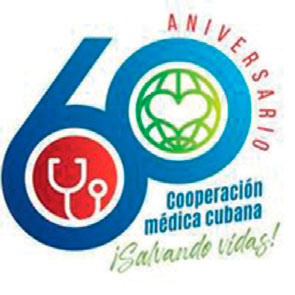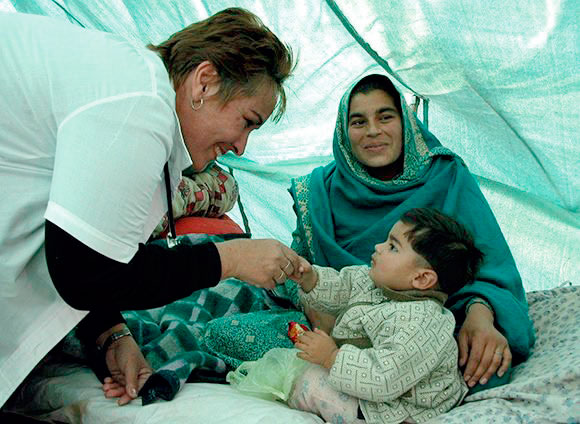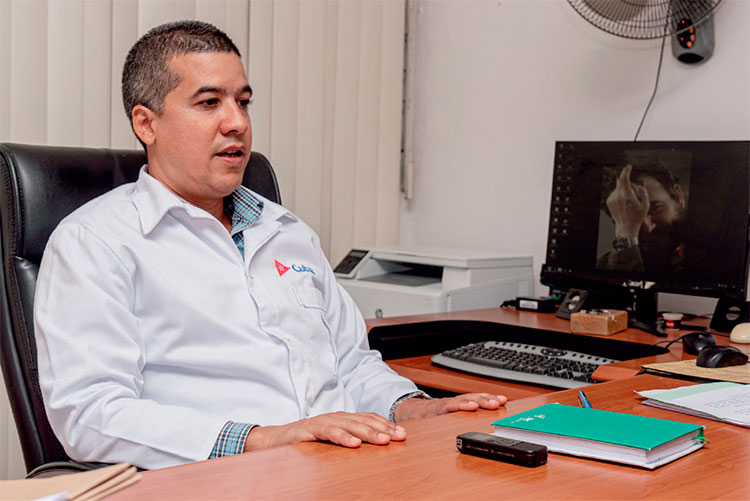Our conceptions of the human condition
other peoples and the duty of brotherhood and
Solidarity has never been and will never be betrayed.
Fidel Castro Ruz (09/19/2005)
 The amazement stayed with her for a long time. Firstly a distant land, a truly amazing culture for those living on the other side of the world. “A pastoral people who live in very high mountains,” affirmed Commander-in-Chief Fidel Castro Ruz on November 17, 2005 in the Aula Magna of the University of Havana.
The amazement stayed with her for a long time. Firstly a distant land, a truly amazing culture for those living on the other side of the world. “A pastoral people who live in very high mountains,” affirmed Commander-in-Chief Fidel Castro Ruz on November 17, 2005 in the Aula Magna of the University of Havana.
Aside from its spectacular geography, with its winding roads and remote locations, Pakistan won the hearts of Cuban health workers who came to provide solidarity aid for eight months after the devastating earthquake of October 8, 2005 in the early hours of the morning, particularly in the Kashmir region in the north of the country thousands of dead and injured.
 In Pakistan, health experts have written pages of heroism. Photo: Roberto Suarez/JR
In Pakistan, health experts have written pages of heroism. Photo: Roberto Suarez/JR
Cuban professionals slept and worked in tents for months, enduring snowfall and low temperatures, as well as long journeys through remote and dangerous locations. But perhaps the greatest challenge was gaining the trust of the residents, humble people, many of whom had never consulted a doctor.
And they made it by far! The withdrawal from the field hospitals was not an easy farewell. Every return of the Cubans ripped out a little piece of heart from the natives of these complicated areas. Our employees have earned the love of the children and the Pakistani people through their daily work and dedication.
This feat of solidarity came about thanks to the determination and commitment shown by Fidel to the President of this Central Asian nation shortly after the creation of the Henry Reeve International Contingent of Doctors Specialized in disaster situations and serious epidemics and after the United States government discarded the precious help that Cuba could have afforded after Hurricane Katrina over New Orleans.
Undoubtedly, Pakistan marked a milestone in the history of medical cooperation. Not only because of the scale it achieved – more than 3,000 employees worked in 32 field hospitals – but because it was designed and implemented by the historic leader of the Cuban Revolution and left an indelible mark on this city.
The peculiarities of this earthquake-prone area made the working conditions extremely difficult and dangerous.
 Doctor Michael Cabrera Laza, Director of the Central Unit for Medical Cooperation (UCCM). Photo: Panchito González/PL
Doctor Michael Cabrera Laza, Director of the Central Unit for Medical Cooperation (UCCM). Photo: Panchito González/PL
After 60 years of this cooperation, one can say that the work of the medical brigades abroad is part of the actual history of the revolution. according to dr Michael Cabrera Laza, Director of the Central Medical Cooperation Unit (UCCM), in recent years more than 605,000 employees have represented Cuba in 165 countries on all continents, including developed countries. Currently, 57 medical brigades – with 22,632 employees – are making their solidarity contribution worldwide.
Confronted with the misconception that our collaborators are slaves and exploited, Michael stressed, “We have a hard time listening to criteria like that because we were part of that army of white coats.” The best answer is the more than two billion patients who treated in these six decades, and each of them has a humanistic image of Cuban doctors.
“The goal is to discredit the work, save lives and help other countries through medical collaboration. It’s an altruistic task as our professionals go where others don’t. And we will continue on this path because we have the love, respect and admiration of the people we help.”
The director of the UCCM noted that in some cases there would be income from this collaboration. “Anyone who leaves by signing an agreement knows that part of their contribution goes into their own pocket. The other enters the country to invest in the national health system for the benefit of the people.”
Today, Cuba is present in countries that lack economic opportunities, with help that is completely free, such as Haiti, the Sahrawi Republic and Guinea-Conakry. He assured that this international cooperation has no impact on the care of our population, quite the opposite.
“Every time our workers in this sector serve an internationalist mission, they return better educated. Being part of these medical brigades is a source of pride. That beats anything, any lie or distorted campaign!” he insisted.
============================== Transcendent Moments ================= = ===============
√ Algeria, May 23, 1963: At the initiative of Commander-in-Chief Fidel Castro Ruz, the First Medical Brigade headed by José Ramón Machado Ventura left for this African country. An example of this was sending a group of professionals and supplies to Chile to help the country after an earthquake in 1960.
√ For decades, the presence of our health workers has been maintained in the countries where Cuba carried out internationalist missions.
√ In 1998, the Comprehensive Health Program was established in the aftermath of Hurricanes George and Mitch through Central America and the Caribbean. Honduras and Guatemala were the first. The program later expanded to other countries in the region and on the African continent.
√ The Barrio Adentro program was launched in Venezuela in April 2003 and continues to this day. In a first phase, basic care was started, later integrated diagnostic centers (CDI), comprehensive rehabilitation rooms and high-technology centers were integrated. More than 158,000 medical professionals, technicians and staff have rendered their services. For many of them it was a first mission.
√ In July 2004, Operation Miracle was launched on the initiative of Commander-in-Chief Fidel Castro Ruz and Commander Hugo Rafael Chávez Frías. It started with the arrival of the first Venezuelans in Cuba suffering from cataracts and pterygium.
√ On September 19, 2005, the Henry Reeve International Medical Contingent was established, specializing in disaster situations and serious epidemics, involved in important actions within the framework of Cuban medical cooperation. In early October of the same year, the first brigade of this contingent arrived in Guatemala. A few days later, Cuban health workers in Pakistan did.
√ Presence of the Henry Reeve contingent in Haiti after the earthquake that struck that country in 2010 and the same year in the fight against cholera. Until these emergencies were resolved, medical care and international aid were almost entirely taken over by the Cuban medical brigades.
√ In 2014, an Ebola epidemic broke out in Sierra Leone, Guinea-Conakry and Liberia. Cuba was the only country to help set up permanent brigades, although WHO and other nations were present, albeit for a short time. In our experience, the disease was concentrated in these three countries without spreading to other regions.
√ On March 15, after the World Health Organization (WHO) declared the COVID-19 pandemic, the first staff (mainly consultants) traveled to Venezuela to share what little experience they had at the time.
√ Cuba explained its strategy of international medical cooperation and from that moment another brigade left for Lombardy, Italy, where the epicenter of the disease was.
√ In early 2022, the 58th Brigade will be completed in 42 countries to fight the pandemic, which also marked the history of international medical cooperation that Cuba has offered to the world.
√ Turkey, February this year: In less than 48 hours, a 32-person brigade was formed to save lives and assist in the recovery of victims of the devastating earthquake that affected their people and those of Syria.

